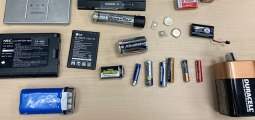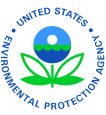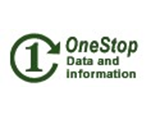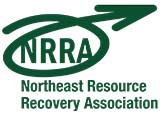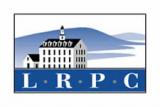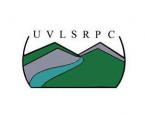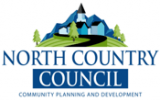Managing My Waste
Helping individuals with managing common types of waste.
What is solid waste?
With some exceptions, solid waste is any abandoned or discarded material that has been placed in the waste stream. This includes household trash, recyclables, food waste, furniture, tires, construction and demolition debris (C&D), and electronics.
Besides solid waste, what other types of waste are there?
While the following items are classified as “waste,” they are not regulated as solid waste in New Hampshire:
- Yard waste, which includes leaves, grass clippings, garden debris and small branches/brush. Invasive plants should not go with yard waste.
- Hazardous waste
- Household hazardous waste (HHW) includes household products that have flammable, corrosive, explosive, reactive, or toxic properties. Identify them by looking for the words “Danger” (most toxic) “Flammable,” “Oxidizer,” “Warning,” and “Caution” (least toxic) on the label. Use this visual aid to identify HHW items in your home.
- Universal wastes meet the regulatory definition of hazardous waste but, during accumulation and transport, pose a relatively low risk compared to other hazardous wastes, when recycled. In New Hampshire, universal wastes include aerosol cans, automotive antifreeze, certain batteries, cathode-ray tube televisions and computer monitors, mercury-containing devices, fluorescent lamps and certain pesticides.
- Septage and sludge from treatment of wastewater.
- Nuclear material regulated under the Atomic Energy Act.
Who generates waste?
Everyone! We all have an impact.
Waste is generated at residential, institutional, commercial and industrial establishments. Management of certain wastes depends on how it was generated. Wastes generated by businesses may be subject to different requirements. However, there are best management practices that everyone should follow for safe and proper disposal of any waste.
How is solid waste managed in New Hampshire?
Solid waste can be diverted (recycled, composted, etc.) or disposed (landfilled or incinerated). New Hampshire's Waste Management Hierarchy shows the preferred options for managing waste. The three categories of solid waste management facilities in New Hampshire are collection, storage and transfer (C/S/T) facilities, processing and treatment (P/T) facilities, and landfills.
C/S/T facilities form the majority of New Hampshire’s solid waste management infrastructure. Most are municipal transfer stations that function as drop off centers for generators of trash and recycling within the facility’s service area. Other C/S/Ts include:
- Privately-owned commercial transfer stations.
- Scrap metal recycling facilities.
- Motor vehicle salvage yards.
- Asbestos waste holding facilities.
P/T facilities include:
- Composting facilities.
- Anerobic digestors.
- Waste-to-Energy facilities.
- Motor vehicle recycling facilities.
- Incinerators without energy recovery.
- Material Recovery Facilities (MRFs).
- Contaminated soils treatment facilities.
- C&D/wood processors.
New Hampshire does not have any anaerobic digestors permitted to process solid waste, nor are there any MRFs equipped to fully sort single-stream recycling. However, some C/S/Ts sort select, commingled recyclables on a limited scale. For example, the Turnkey Landfill in Rochester has a MRF that separates cardboard from single-stream recyclables and the Keene Recycling Center has a dual stream MRF.
There are six operating, double-lined landfills in New Hampshire that take municipal solid waste (MSW): three have limited service areas and three are commercial facilities that can take waste from anywhere. There are also two operating unlined landfills with limited service areas: one accepts C&D and one accepts bulky wastes. New Hampshire has more than 300 closed/inactive landfills that need to be monitored and maintained, the majority are unlined former municipal “dumps.”
How is solid waste regulated in New Hampshire?
The management of solid waste is regulated by the NHDES Solid Waste Management Bureau. With a few exceptions, solid waste facilities (i.e., landfills, transfer stations, recycling facilities, incinerators, composting facilities) must obtain a permit to ensure that construction, operation, and closure of the facility is conducted in a manner that is protective of public health, safety and the environment. Solid waste facilities are subject to inspections/audits to ensure that applicable rules, regulations and permit conditions are being followed throughout the life of the facility.
- Managing Waste at Permitted Facilities.
- Motor Vehicle Salvage Yards.
- Asbestos Disposal Sites.
Does NHDES regulate solid waste at the point of generation?
NHDES does not directly regulate solid waste at the point of generation. Regardless of who generates the solid waste (i.e., homeowner, business, industry), it must be handled properly and in a manner that does not pose a risk to public health or the environment. The general public, as well as commercial/industrial generators, can properly manage their solid waste by using a registered solid waste hauler and/or ensuring their waste is transferred to a permitted or authorized facility.
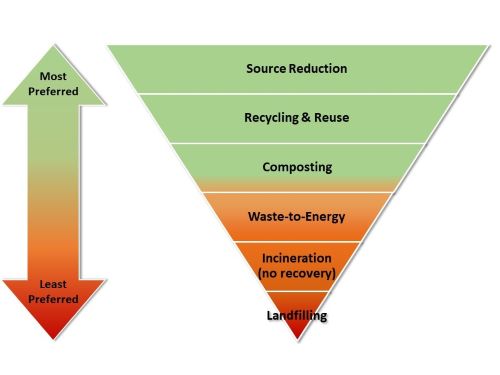
New Hampshire’s Waste Management Hierarchy (established in RSA 149-M:3) provides a standard of preference for managing solid waste in the state. Priority is placed on methods that reduce the generation of waste or divert recoverable materials from disposal in landfills and incinerators.
Types of Waste
Use the A-Z list or blog posts below to learn how to manage different wastes that may be generated in your home, business or an institution.

Aerosol Cans

Ammunition, Explosives, Fireworks, Flares
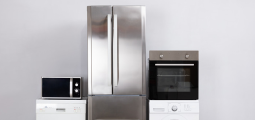
Appliances
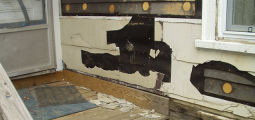
Asbestos
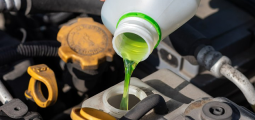
Automotive Antifreeze
